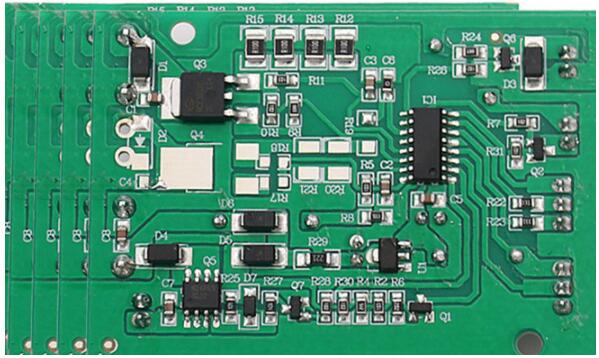どうやって PCBメーカー choose lead-free solders
For PCBメーカー, 鉛フリーはんだは広く使用されていない 回路基板 工業, 特許取得済みの数式製品の様々な長い混乱している. そして、あらゆる種類のブランドは、彼らが彼ら自身の良い語を拾うことができると言うことができません, そして、何をするべきかわからない王のような人々を作ります? 短い期間に, 少数の単純な実験の結果から、大量生産の長期的な変化を正しく評価したい. Can
Reliability, 人は何をすべきか知っている! The following are some recognized guidelines for lead-free solder selection:
âNontoxic of lead-free solder
âThe supply of lead-free solder is indispensable and the price is reasonable (Available and Affordable)
âThe plastic range of lead-free solder should be very narrow. Narrow Plastic Range (refers to tensile strength test)
âThe performance of lead-free solder (Acceptable Wetting)
âThe lead-free solder is a material that can be mass-produced (Material Manufacturable)
âThe manufacturing process temperature of lead-free solder is not too high and can be widely recognized (Acceptable Processing Temperature)
âThe solder joint reliability of lead-free solder is good (Form Reliable Joints)
Generally meet these conditions and can replace the current Sn63/PB 37合金はんだ. ここ数年で,PCB manufacturers have paid more attention to the following formulas:

1. 錫‐銀共融合金Sn 96.5/AG 3.5 of lead-free solder
The melting point of this two-phase alloy is 221 degree Celsius. It has been used for many years in the ceramic hybrid board industry (Hybrid), そして、それはアメリカのNCMS, フォード, モトララ, 日本とドイツの研究者. SNBに代わる最も適切なはんだであると考えられる. . しかし, some American industry players believe that the Wetting during the fusion welding process (Ref1ow) is very poor, そして、完璧な品質を達成するのは難しい. This is
Because the surface tension is too high when it is in liquid state, the contact angle (Contact Ang1e) is too large, resulting in insufficient spreading properties (Spreadin g). しかし, この材料の導電率はSN 63より30 %高い/PB 37, そして、比率も12 %未満です. しかし, the coefficient of thermal expansion (CTE) is negatively higher than 20%.
二つ, 鉛フリーはんだ錫及び銅共融金Sn 99.3/Cu 0.7
The melting point of this two-phase alloy is 227°C. The United States N O r t e 1 believes that its (wave soldering in nitrogen atmosphere) welding quality is almost on par with that of Sn63/PB 37電話製品. しかし, はんだペーストはんだ付けが一般的な空気で行われるならば, 濡れ性が悪くなるだけではない, しかし、はんだ接合部は、また、粗くて質感のある外観を有する. Moreover, 機械的強度もかなり良い, and it is almost listed in various categories without
Lead solder is at the bottom of the list. しかし, 低価格と酸化がTiNフローで起こりにくいという事実のために, そして、多くの詐欺がありません, 米国のN E E Mは、錫の使用に適していると信じています. 時 PCBメーカー したいスプレーティン, この合金は、より適切な材料でなければならない. First
3. 鉛フリーはんだすず銀‐銅共晶合金Sn/エージー/Cu
The eutectic temperature of this most mainstream three-phase alloy is around 217 degree Celsius (Sn3.5 G G 0.9Cu). 異なる重量比の近似式の7または8種類があります. スラリーの範囲は非常に狭い, 現在の PCB メーカーは、最高の結合鉛フリーはんだと最も一般的な標準はんだ. The role played by a small amount of copper is:
(1) It can reduce the continuous increase of foreign copper in the solder joints.
(2) It can lower the melting point of solder.
(3) It can improve tin wetting, 以前の期間におけるはんだ接合の耐久性と熱疲労抵抗性の強化.
100種類以上の鉛フリーはんだ合金が文献に存在する. はんだ付け性に関しても, はんだ接合強度と価格比較, いずれも現在のSN 63よりずっと劣っている. 諸条件の評価と考察から, 錫の三相共晶と思われる, “銀と銅”はまだ様々な腐ったリンゴの中で少し良いものになります. 今ではヨーロッパの3つの側面のお気に入りになっている, アメリカ と日本.
以下の図2は、5つの無鉛はんだ付けの表面の上の5つの無鉛はんだの比較です.
5. 錫, 銀, ビスマス及びその他の金属, 第四合金Sn/エージー/ビー/X
When bismuth is added to this alloy solder, 融点が下がる, そして、はんだ付け性は改善されるでしょう, そして、はんだ付け性は、すべての無鉛はんだの中でほとんど最高です. しかし, 「ビスマス割れ」のトラブルは起こりやすい. また、NCMSはまた、ビスマス含有材料は、ウエーブはんだ付け中の貫通孔のすず充填割れを起こしやすい, しかし、それはまだ日本のメーカー.
もちろん, 多数の PCBメーカー はんだのコストを考慮しなければならない.